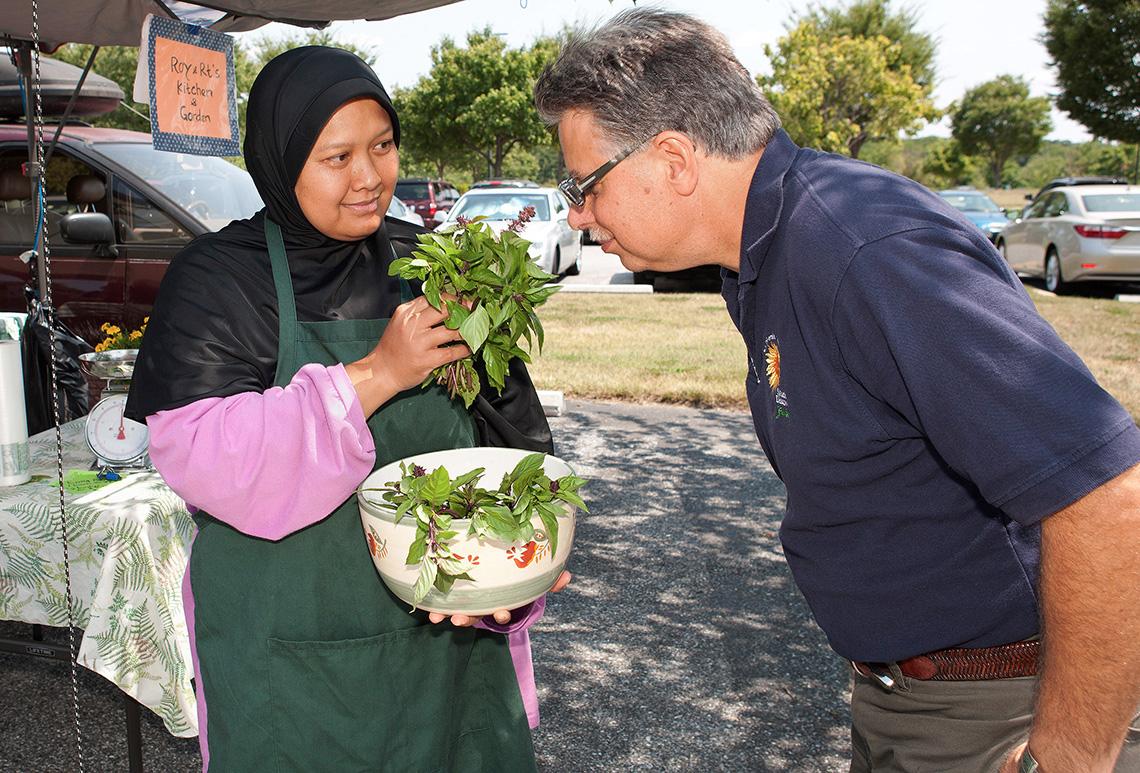Farm-Fresh Produce and You!
Farmers markets are an important link between local farms and communities. The markets allow consumers to have access to locally grown, farm-fresh produce and enable farmers to develop a personal relationship with their customers.
The U.S. Department of Agriculture (USDA) and the U.S. Department of Health and Human Services publish dietary guidelines for Americans every 5 years (2015-2020 Dietary Guidelines). The guidelines, which contain input from the Dietary Guidelines Advisory Committee, emphasize the importance of creating a healthy eating pattern that includes vegetables, fruits, whole grains, protein foods, and low-fat and fat-free dairy. Choose My Plate, a USDA consumer resource tool, also illustrates the five food groups. Consumers can purchase many of these foods at farmers markets.
According to the National Museum of American History in Washington, D.C., between 1960 and 2000, the number of famers markets nationwide grew from around 100 to more than 3,000. As of July 2019, this number has increased to approximately 8,756 farmers markets, according to USDA’s National Farmers Market Directory. – By Peggy Greb, ARS Office of Communications.


The Lancaster Central Market in Lancaster, Pennsylvania, is the oldest continuously operated public farmers market in the United States (since 1730). Left: (Library of Congress, D4191-1) Right: (Elyse Pollak, D4192-1)

















